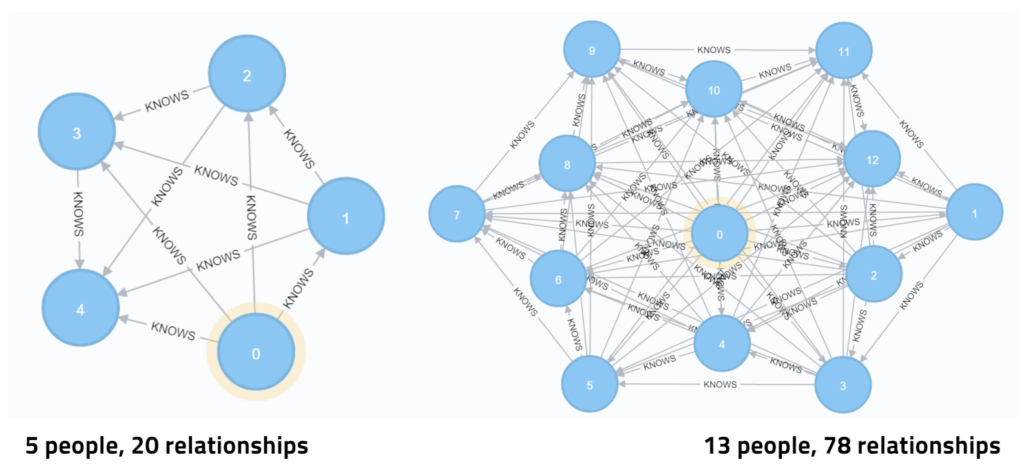What are the most important things to consider when building an effective team? Experience? Communication skills? Resilience? The ability to play well with others? All important.
But there’s another potentially make-or-break measure that could have just as much impact on the success of your team – size.
According to research, when it comes to teams, size matters. And while it might be cheaper in a budget-conscious NFP to have bigger teams with fewer managers, decisions like that can have a significant impact on the effectiveness of your organisation.
The truth is your staff may all be more productive when their teams are smaller.
Why size is important
According to the Ringelmann effect, when a team gets too big, the productivity of individual members goes down – a phenomena known as “social loafing”.
This is because individual members believe their contribution will be proportionally less impactful (or less noticed) and so they put in less effort.
The phenomena was first documented by French agricultural engineer Maximillian Ringelmann, who analysed behaviour during a rope-pulling contest and discovered that the larger the team, the less effort each individual contributed. His findings have since been supported by a variety of studies, including by Management expert, Professor Jennifer Mueller.
What’s the ideal size for teams in a NFP organisation?
There is debate among experts about the ideal team size, with suggestions ranging from five to twelve members, but research suggests the sweet spot is about five.
Professor Mueller, says teams smaller than five can struggle with skills gaps and challenging team dynamics. Having an even number in a team can also lead to deadlocks when it comes to making tough decisions – sometimes creating conflict in teams of four or six.
Meanwhile, larger teams can become unwieldy and have a tendency to fragment into sub-teams, form cliques and talk over each other. Where there are skill overlaps, people can become unmotivated and put in less effort.
How do you know when a team is too big, and what should you do about it?
It’s important to note that the ideal team size may vary depending on what kind of project you’re trying to deliver. So before rushing to split up your teams, you should consider your organisation’s unique needs.
But if you suspect your teams aren’t as effective as they could be, here are five signs that your teams may be too large:
1. You’re doing complex work
If your task is simple and you want to deliver a large amount of independent, undifferentiated work, then a larger team will help you get more work done faster. For example, stuffing 5000 letters to donors at tax time, painting a building or making 500 fundraising calls.
But if your task is complex and requires collaborative decision-making from people with different skills, a larger team may be counterproductive. Fewer people may be more effective.
2. You’ve got role duplication
A strong team covers the minimum unique roles needed to ensure you have no skills gaps or overlaps. Too few people and you may find you’re missing vital expertise. Too many and you may employ people with similar or overlapping roles, leading to a loss of motivation and productivity.
3. Someone is taking it easy
How many people in your team seem to have time on their hands? If your team has grown to a size where the Ringelmann effect is in play, you may have team members who are cruising and leaving the heavy lifting to others. This is destructive to the team dynamic and the first sign may be resentment from other team members.
4. Too much chatter
More people means more communication and less effective collaboration. With more points of contact in the team, email, messaging and phone traffic increases exponentially, wasting the team’s time and energy on complex communication instead of productivity. Here’s a graphical representation of the increase in complexity as a team grows:

5. Decisions are a nightmare
A camel is a race horse designed by a committee – or so the story goes. The larger your team the harder it is to get good quality decisions made quickly. Reaching a consensus can be a challenge even for small groups – whether it’s on a weighty project issues or just where to go for lunch – because teams will get caught up in lengthy debates as they explore the options. This gets harder with each extra person involved. Smaller teams, especially when they are an odd number, tend to be more nimble and efficient when it comes to decision-making.
Great teams start at the top
If you spot any of these issues in your team, it doesn’t mean you need to instantly start cutting back – although it might. Other options you can consider are working to increase engagement and reorganising the team into sub-teams with differentiated responsibilities.
Ultimately, the key to the success of your teams is engagement and the key to engagement is a good manager. According to Gallup research, teams smaller than 10 members had both the highest and the lowest levels of engagement and the difference was who’s in charge.
That’s because with fewer the direct reports, a manager’s impact is much greater – for good or ill.
(For more on what makes a great manager read this research by Google based on 10 years of data and across tens of thousands of employees which found ten common behaviours across the most successful managers.)
Building an effective team requires thinking about more than just what skills the individual members bring to the table. And hiring a manager with the right characteristics could just be the key to turning any team into a dream team.
Related Posts



